Away from the constant “spring break” hustle of Cancun, south into the Yucatan hinterlands, there are fish. Lots of them.
And Rhett Schober knows where to find them. Seriously. He knows the Caribbean coastline like a local. That’s because, for all intents and purposes, he is one.
An ex-patriated Coloradan from Vail, Shrober has taken to the southeast corner of Mexico like … well, like a fish to water. He's traded in his little creek rods for stout saltwater gear and his chest waders for flats boots. Just for grins, he jokes about fly fishing the the flats in a thong.
And the good news is, he’ll share. The fishing. Not the thong.
“This is a great place to get lost,” he told me, tipping a cold beer to his lips after dinner on the beach in the little village of Akumal. “The fishing is so good, so unspoiled. The people are genuine and very welcoming. If you like to fly fish, this place has everything you could possibly want.”
Schober does his share of guiding, but he’s also the purveyor of posh, homey surroundings for vacationing visitors, and, he said, there’s a nice marriage between his fishing and his “day job.” He runs Akumal Villas, a property management company based in the little town about 45 minutes south of Cancun.
“This might be the best place to bring the family on vacation, rent a villa for a week and do all the things the family wants to do,” he said. The area is famous for it’s diving, both in the Caribbean itself, but also in the many cenote caves and seeps that dot the jungle landscape. The sea is a shade of blue that simply can’t be described in words. There are also the cultural curios, like ancient Mayan ruins at Tulum and Chichen Itza, the shopping along the funky coastal drive through Tulum and the usual kids stuff—water parks, and the like. “They get a vacation, and you get some great fly fishing, right outside your door.”
And Schober can show you the ropes one day, and turn you loose to do your thing for the rest of your trip. He and I spent a morning together on one of several shallow bays blocked from the blue water by a coral reef. Despite a fierce north wind, we took shots at triggerfish and even played with a pod of funky pufferfish before working our way around the point and catching pan-sized jack crevalle until we tired of doing it. We saw a couple of bones on the turtle grass, but, typically, I spooked them before I could make a cast.
We stepped up to the beach to a kitschy little seaside restaurant, rested our fly rods between a couple of palm trees, and within minutes, we were dining on fresh guacamole and sipping Coronas, all the while watching the eagle rays cruise ominously through the shallows.

“This is a pretty unique experience,” Schober said. “This place sees a lot of people, but not a lot come down to fly fish. It’s a great place to explore, and it would take a lifetime to see it all.”
Farther south, even more removed from the touristas, an adventure-minded angler can damn near drive all the way to Belize, because once you get to Xcalak, you might as well be there, anyway. Leaving Schober’s cozy bungalow in the jungle, a friend and I took a rented car (about $500 a week—about what you’d pay at home) and pointed the wheels south to my new favorite little fishing village, Mahuhual.
This little fishing town about 30 miles north of Xcalak is really the last civilized spot on the map before you’re swimming across the mouth of Chetumal Bay enroute to Belize City. It’s funky and not totally discovered by the tourists, which was fine with us. We walked along the malecon one morning, looking for a place to have breakfast, and I realized something.
“Either this place is really popular with Europeans, or I might be the only straight guy in Mahuhual.” It earned a laugh from the gal I was with. And then, as if scripted, we both quickly added in the dutiful Seinfeld disclaimer. “Not that there’s anything wrong with that.”
Later that night, we ventured into an old-school bar on the town’s main drag. The hostess spoke great English (turns out, she used to work at a fly fishing lodge north of town) and poured a liberal rum and Coke. The place rocked with 80s pop (yes, I still know the words to “Chameleon”—may my shame never end). Three hours later, we were nicely buzzed, and I’d lost 100 pesos to her son, a sneaky little pool shark.

But in addition to hole-in-the-wall bars and Speedo-wearing dudes walking around with selfie-sticks, the little village sits right on a reef-sheltered bay. We grabbed a couple of beach chairs one morning, but instead of catching rays, I put together a 7-weight and waded out onto the turtle grass. I had to swim a 30-foot boat channel with my fly rod in my mouth, but after that, I didn’t get wet above the knees, and I had the whole flat to myself.
I managed to tangle with a couple of surprisingly picky triggerfish and a whole lot of jacks and snappers over the course of a few hours. I spied one bonefish, but lost it in the chop—that brutal north wind and overcast skies made seeing fish on the flats a real challenge.
I also managed a couple of foot-long barracudas and had a small shark follow the fly for a bit before it veered off and disappeared into the ether. If I’d had more time, I would have spent it in Mahahual, and I would have explored the whole bay.

And, of course, there’s Xcalak.
It’s a short but adventurous drive on a gnarly dirt road south out of Mahahual to this little spot on Mexico’s southern tip, but shallow, reef-lined bays are choked with bonefish and permit, and, at the end of the road one evening, we cast into a small creek on an incoming tide and did battle with very respectable jacks and one truly impressive tarpon that leaped from the blue-gray water and snapped my tippet. This place, with a kayak and a week to burn, might be a fly fisher’s Nirvana. The road keeps all but the die-hards out, and the national park status of the coastline and the reef keep it generally protected from development. Early in the morning or as the sun fades behind the jungle in the evenings, the road crawls with iguanas and chakalakas, the latter of which looks like a roadrunner got busy with a velociraptor, and possesses a distinct call that resembles a turkey caught in lawn mower.
We got back to Schober’s place about an hour before dark the evening of our last day in Mexico, and, after a few cold Coronas and tales of missed triggerfish and the tarpon that got away, we hit the rack and slept soundly with the windows open to the jungle and under the white noise of a slightly squeaky ceiling fan.
This little corner of Mexico is a do-it-yourself fly fisher’s paradise, and it was tough to get on the plane the next day, and return to the February chill of Idaho. But I left with a message for Schober: “Keep the lizards out of the bungalow. I’ll be back, brother.”











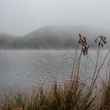
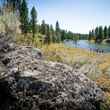


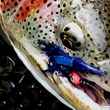
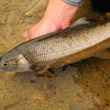





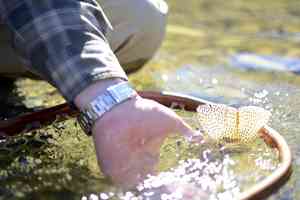



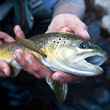


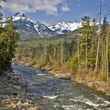
Comments